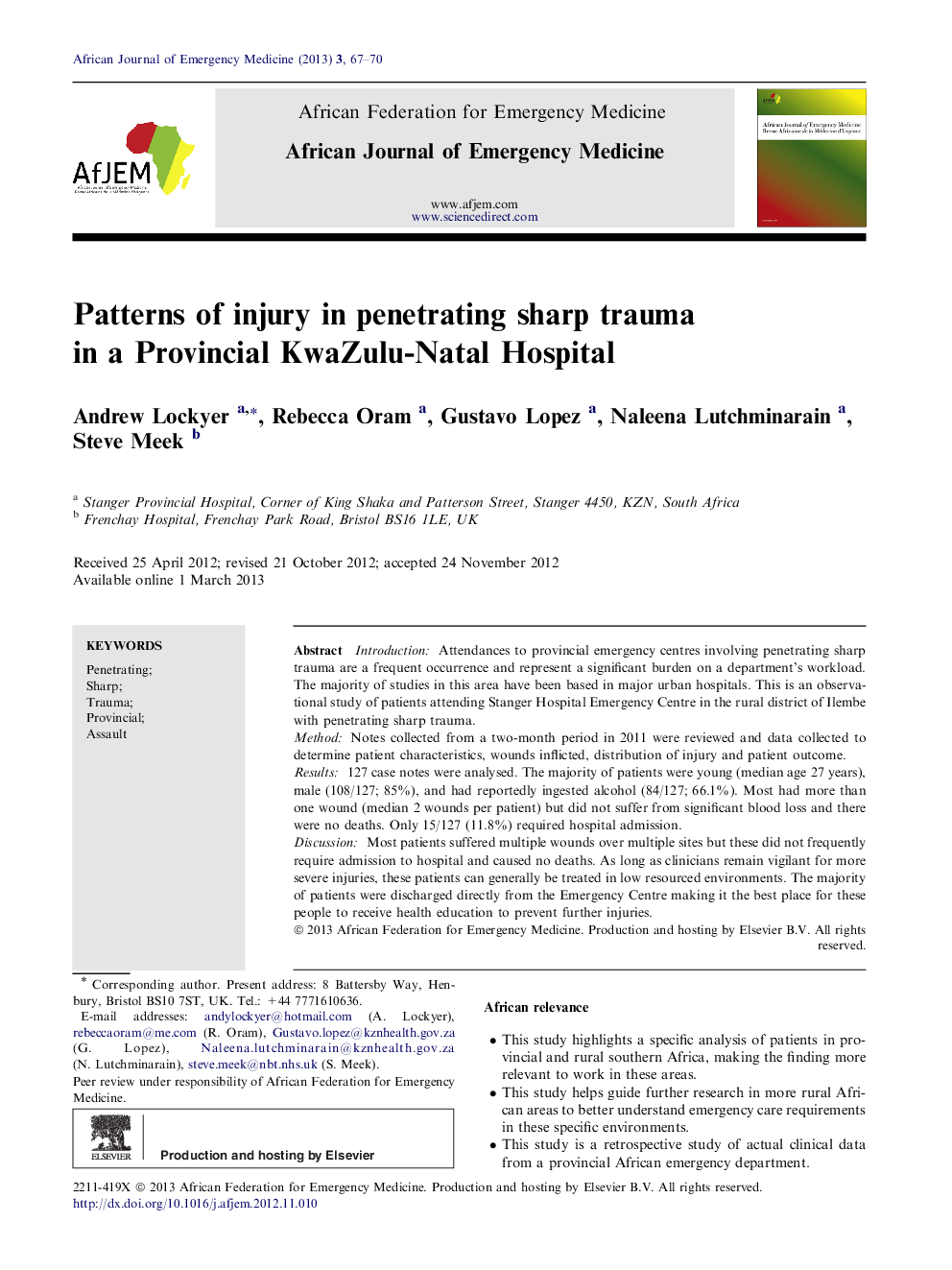| کد مقاله | کد نشریه | سال انتشار | مقاله انگلیسی | نسخه تمام متن |
|---|---|---|---|---|
| 3222708 | 1587958 | 2013 | 4 صفحه PDF | دانلود رایگان |

IntroductionAttendances to provincial emergency centres involving penetrating sharp trauma are a frequent occurrence and represent a significant burden on a department’s workload. The majority of studies in this area have been based in major urban hospitals. This is an observational study of patients attending Stanger Hospital Emergency Centre in the rural district of Ilembe with penetrating sharp trauma.MethodNotes collected from a two-month period in 2011 were reviewed and data collected to determine patient characteristics, wounds inflicted, distribution of injury and patient outcome.Results127 case notes were analysed. The majority of patients were young (median age 27 years), male (108/127; 85%), and had reportedly ingested alcohol (84/127; 66.1%). Most had more than one wound (median 2 wounds per patient) but did not suffer from significant blood loss and there were no deaths. Only 15/127 (11.8%) required hospital admission.DiscussionMost patients suffered multiple wounds over multiple sites but these did not frequently require admission to hospital and caused no deaths. As long as clinicians remain vigilant for more severe injuries, these patients can generally be treated in low resourced environments. The majority of patients were discharged directly from the Emergency Centre making it the best place for these people to receive health education to prevent further injuries.
Journal: African Journal of Emergency Medicine - Volume 3, Issue 2, June 2013, Pages 67–70